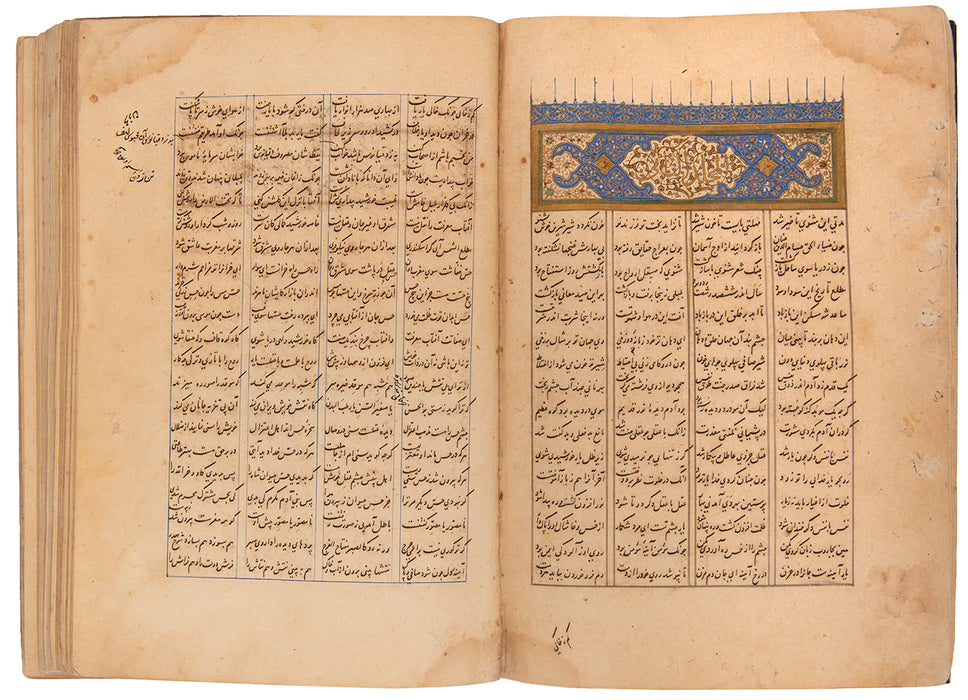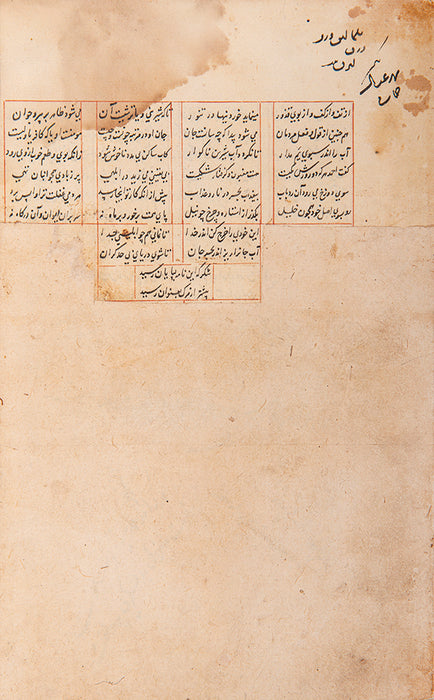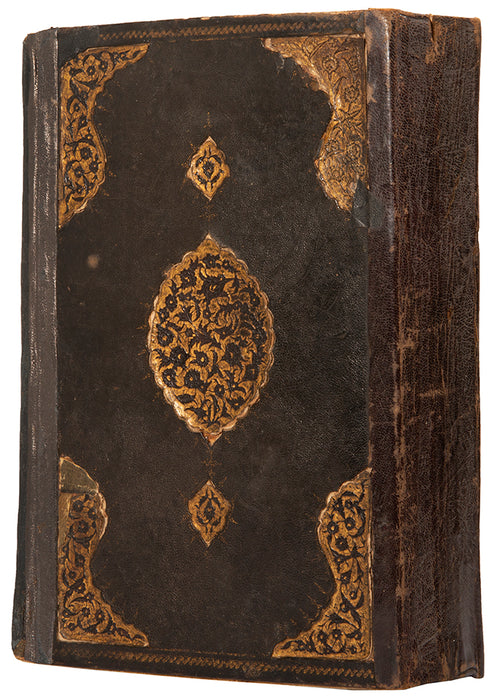
Mathnavi.
Timurid Persia or Turkey, possibly Qazvin, mid-15th century.
This is Rumi's most celebrated work and a pillarstone of Sufi literature, formed of a vast collection of self-reflective lyrical anecdotes of Sufi wisdom inspired by the Qur'an and Islamic teachings. This vast collection of 'mathnavis' (a form of Persian meter) was compiled by Rumi, known as Mawlana (master), in circa 1244 during the poet's time in Anatolia. What sets this particular collection of poetry aside from his contemporaries, is that Rumi compiled these verses in a spontaneous manner as a reflection of events or thoughts that appeared to him over the course of his everyday life. The revelatory nature of the composition and loosely connected narrative of didactic stories made this work immensely popular with Eastern and Western audiences alike, and has remained one of the most collected poetical works internationally since Rumi's death in 1273 AD.
This manuscript demonstrates the absolute best in manuscript production of the Timurid Empire, with influences from the Ottoman world as well; suggesting manuscript production in the eastern regions of the Timurid Empire, possibly in Qazvin. The paper is of a very high quality, fibrous polished buff paper (probably produced in Damascus), and although there is no scribal attribution the manuscript has been copied in an elegant and regular hand showcasing an early style of nasta'liq script. The finesse off the rich illumination is akin with the most luxurious manuscripts from this period, and could only have been produced in a scriptorium associated with the royal Timurid courts.
Furthermore, the binding is of a very high quality and an early example of its kind; it's a early sixteenth century tooled leather binding, most comparable to the bindings 79 and 80 of the Haldane classifications (Islamic Bookbindings, London, 1893), that belong to manuscripts dated 'c. 1500' and '1506-7' respectively.
Single volume, illuminated manuscript on fibrous polished buff paper, in Farsi, textually complete (lacking 4 leaves at the end of Book 6 that are replaced in eighteenth and nineteenth century manuscript facsimile, 337 leaves plus 4 leaves text, 245 by 170 mm; four columns, 21 lines early nasta'liq script in black, headings in red throughout, 6 gold and lapis illuminated headings in the Timurid style, each opening one of the 6 books of the Mathnavi, contemporary catch-words throughout, columns ruled in blue, some very slight water-staining to margins and a few scattered smudges to text, overall attractive condition; early sixteenth-century stamped leather binding with flap, with cut-out cartouches to leather decorated by corner-pieces and central medallions with foliate designs and coloured in gold, spine and flap hinge rebacked and repaired, an attractive early binding.
Provenance
Delivery
We offer secure and express delivery on all local and international orders of rare books, maps and prints placed through this website.












